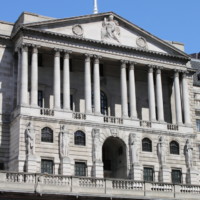
The report said that its approach remained appropriate to meet its two per cent inflation target that would sustain growth and employment.
It said gross domestic product (GDP) growth in the second quarter rose by five per cent, which was four per cent below pre-pandemic levels and stronger than expected in May.
Covid-19 cases have risen but are now starting to fall, although the number of people being told to self-isolate has grown.
Indicators of household spending have been flat at near to pre-Covid levels, and the housing market has also stayed strong.
Looking ahead, GDP is expected to grow by around three per cent, which is weaker than predicated and is expected to reach pre-pandemic levels in the fourth quarter.
The report pegged the unemployment rate at 4.8 per cent in the three months to May, which was slightly higher than at the end of 2019.
Furloughed jobs have fallen and were around two million at the end of June. The report noted that the vacancy stock had grown but there were signs of recruitment difficulties.
The MPC said that spare capacity had been eroded over the past few quarters as demand overtook supply, but these are expected to reduce over time.
Bluestone Mortgages sales and marketing director, Reece Beddall, said the decision to maintain the base rate was welcome to potential and existing borrowers as the low-rate environment would give them an “extra helping hand” to get on the property ladder.
David Whittaker, chief executive of Keystone Property Finance, said: “The Bank of England is playing it cautious and, understandably, doesn’t want to do anything that will derail the recovery.
“For borrowers, the bigger question is whether SWAP rates reflect a different view from the MPC in the weeks ahead and start to rise again and the extent to which this is offset by competition between lenders, who generally have stronger appetites after a great H1 on completions.
“The divergence will probably be clearer at the next Quarterly Inflation Report from BoE in early November. Fixed rates should be stable over this period, but the challenge will be whether the BoE can then ensure that bank rate rises are gradual as 2021 turns into 2022.”














